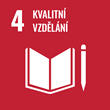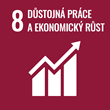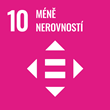
Informace o projektu
Immersive VR technologies as a means to empathizing disabled users in the design- for-all process
(VR4ALL)

- Kód projektu
- KA220-HED-22C56501
- Období řešení
- 9/2022 - 8/2025
- Investor / Programový rámec / typ projektu
-
Evropská unie
- Erasmus+ Klíčová akce 2: Spolupráce na inovacích a výměny osvědčených postupů
- Kooperativní partnerství
- Fakulta / Pracoviště MU
- Středisko pro pomoc studentům se specifickými nároky
- Spolupracující organizace
-
UNIVERSITY OF THE AEGEAN
Instituto Politécnico do Porto
- Odpovědná osoba Nuno Escudeiro
SC Ludor Engineering SRL
Mittelstands (FHM) GMBH - University of Applied Science
The broader objective of VR4All is to introduce the use of immersive VR in the preliminary phases of the design thinking process, emphasizing on inclusive design. The project will deliver VEs to enable designers (students pursuing studies in afford mentioned fields of study) having a first-person perspective of the needs and restrictions of people with visual and motor disabilities (which can be added as assets into the virtual habitat), thus facilitating the design of accessible products.
This objective will be addressed through simulating 2 types of disabilities:
- Visual impairments: color vision deficit, long- or short-sightedness, visual field loss, neurological disorders of the retina and brain (glaucoma, age-related macular degeneration, diabetic retinopathy, etc), age-related cataract; [* For students in the fields of Interior design, Web design/development, Graphic design]
- Motor impairments: Loss or damage of limb(s) (e.g. necessitating the use of wheelchair for moving around), Parkinson’s Disease; [*For students in the fields of Interior design, Product design]
In order to empathize disabled users, the designers will be tasked to immerse themselves in a number of VEs and embody an avatarm on which they can add/remove certain disabilities (assets). Therein, designers will be invited to carry out a variety of tasks, each time activating a particular disability effect (e.g. the visual field loss experienced by glaucoma patients) so as to
assume a first-person perspective of how it like for disabled people when undertaking analogous tasks in real environments.
Of course, task assignment (use cases) will differ depending on the simulated disability or disorder, for instance:
- Students activating the effect of color blindness could be invited to assess the readability of graphical user interface elements in simulated digital applications (web and mobile applications etc), while those enrolled as glaucoma patients could assess the accessibility of a simulated tangible product (e.g. a large printed poster).\
- Students enrolled as wheelchair users could be invited to move around various buildings or office layouts in order to assess their accessibility in the context of supposed interior design projects.
Cíle udržitelného rozvoje
Masarykova univerzita se hlásí k cílům udržitelného rozvoje OSN, jejichž záměrem je do roku 2030 zlepšit podmínky a kvalitu života na naší planetě.





